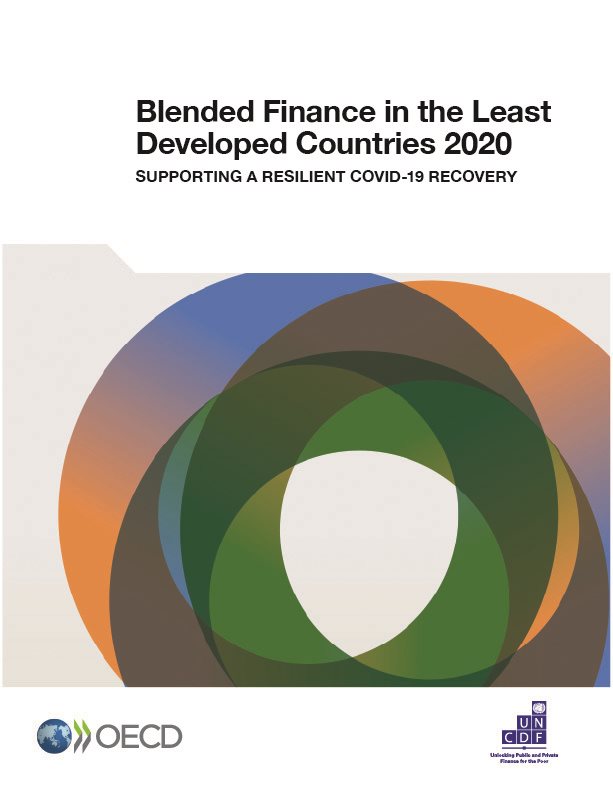Four Ways to Refresh Blended Finance in the Wake of Coronavirus (COVID-19)

Guest Contribution courtesy of the "Blended Finance in the Least Developed Countries 2020" Publication
 Feisal Hussain is the Managing Director of ThinkAhead Consulting, where he specialises in innovation and blended finance.
Feisal Hussain is the Managing Director of ThinkAhead Consulting, where he specialises in innovation and blended finance.
Tags
Blended finance perfectly captures the zeitgeist of the millennial generation, bringing together in harmony seemingly contrasting characteristics of conscious capitalism and pragmatic idealism. However, the COVID-19 pandemic has exposed the fault lines that were already evident before the pandemic, while also revealing new ones.
Blended finance providers need to make a case for why, in the context of extreme fiscal pressures and bare markets, blended finance offers stronger long-term prospects to help build the economy back better. However, in doing so, they need to avoid merely rehashing the traditional business case for blended finance, and show how they will change blended finance’s priorities and approaches as a consequence of COVID-19.
Building up resilient systems
The success of blended finance should be measured not simply in terms of the scale of investment triggered and the amount of private finance mobilised. More emphasis should be placed on how well blended finance has contributed to market systems that are more inclusive, sustainable and resilient, and how well it has enabled large-scale and sustainable growth in private investment.
As the world recovers from COVID-19, the blended finance community will need to ensure that every investment contributes to creating systems resilience. This means prioritising blended finance investments in, for example, health systems, research and development, and natural ecosystems that can help to regenerate local economies, while also requiring every investment, irrespective of sector, to integrate digital systems to enhance transparency and reduce risk and transaction costs. This will also improve the predictive and response capability of the systems as a whole.
Being responsible and thoughtful actors
The application of blended finance must be promoted responsibly and with caution, ensuring that it does not deliberately compete for public and non-commercial resources in areas that carry no private returns but generate very high socio-economic returns. Moreover, a push for blended finance should not eclipse the need for grants or divert public subsidy away from interventions that boost local investment environments.
There is reason to approach this cautiously because the unintended consequences of pushing blended finance may be to create perverse outcomes. It is important to recognise that distributional inequities in blended finance are symptoms of deeper binding constraints on commercial investment decisions. Typically, these are where the investment climate is challenging (e.g. complex regulatory requirements or corruption), markets are not functioning and the risk-adjusted rate of return is uncompetitive. For example, the Overseas Development Institute (ODI) estimates that more than 96% of private finance mobilised through blended finance goes to countries with a credit rating, which most LDCs do not have or fare badly in (ODI, 2019[8]). Under such circumstances, concessional finance may tip the balance, but will not work or sustain its effects if the economic fundamentals are not in place.
Opening up the gated community
The blended finance community must break free of its dominant public sector character and must include the diverse range of providers that make up the blended finance ecosystem. The blended finance universe has found itself confined to a gated community of members drawn from the traditional world of bilateral DFIs and multilateral development banks (MDBs). Today, this traditional club of providers is complemented by the growth of other forms of financing, including from the non-DAC countries, impact investors and philanthropists, as well as private individuals who are taking advantage of digital platforms to invest directly into enterprises and projects that would have been unthinkable and prohibitively expensive a decade or two ago. Taken together, these new financiers deliver more capital to developing countries and leverage more commercial capital than traditional purveyors of blended finance. Consider the following facts.
- According to the DFI Working Group on Blended Concessional Finance for Private Sector Projects, DFIs and MDBs mobilised USD 1.7 billion from the private sector in 2018 by blending USD 1.1 billion in concessional funds with USD 2.4 billion of DFI own-account investments (DFI Working Group, 2019[9]).
- According to Giving USA, American philanthropic foundations managed about USD 950 billion in their endowments, and invested roughly USD 75 billion in 2019 (Giving USA, 2019[10]).
- According to Global Impact Investing Network, its impact investor members collectively manage over USD 400 billion in assets, and in 2019 invested USD 47 billion with a compound annual growth rate of 17% (GIIN, 2019[11]).
- According to Statista, alternative lending platforms in emerging and developing economies, including crowd lending (i.e. digital lending to SMEs) and peer-to-peer lending (i.e. digital lending to individuals), channelled USD 225 billion in 2019 with a compound annual growth rate of over 50%. Excluding China and India, the alternative lending market channelled more than USD 2.4 billion to businesses and individuals in developing and emerging markets, leveraging capital from the private sector at roughly the same level as traditional blended finance providers (Statista, 2020[12]).
The gates of the blended finance community, therefore, need to be opened to these new players, to new approaches and platforms, and to new forms of collaboration based on comparative advantage.
Creating strategic convergence and synergy
The artificial distinction between grant and non-grant instruments must change post-COVID-19. Blended finance as implemented by DFIs and MDBs has become synonymous with the use of non-grant instruments. Yet if financial leverage is the metric by which blended finance is judged, there is a distinction without a difference between grant and non-grant instruments vis-à-vis their blended finance capabilities. According to the ODI, MDBs and DFIs contributed just under 60% of the cost of blended finance investments overall and as much as 73% in LDCs. On the other hand, bilateral grant providers mobilise more private finance in LDCs than MDBs, relative to their contribution.
Besides value for money and leverage, the differences in approach between grant-giving institutions and non-grant-giving DFIs and MDBs are narrowing. Grant providers have been gradually honing approaches and tools that increase private sector investment. This is especially true in LDCs, where risk levels are high and private investors require a greater degree of risk mitigation. Grant providers have tested and scaled up approaches that create conditions for greater private sector investment (e.g. investment climate assessments, financial sector development, assistance for capital market development, etc.). They have also tested and scaled up tools that work directly with the private sector to trigger investment using both non-financial instruments (e.g. market systems approaches to private sector development, start-up incubators, etc.) and financial tools (e.g. challenge funds).
Notwithstanding greater convergence, non-grant and grant providers have distinctive incentives and philosophies. Non-grant agencies are instinctively risk-averse, given the pressures to retain the value of their capital or AAA rating. Consequently, they are unlikely to significantly increase their exposure in LDCs any time soon. On the other hand, grant providers have none of the commercial pressures faced by DFIs and MDBs and thus can take greater risks, especially in LDCs.
Post-COVID-19 blended finance arrangements will, therefore, need more joint approaches between grant providers and non-grant providers, leveraging each other’s comparative advantages, tools and instruments to maximise both financial leverage and larger impact. As the world convulses in response to COVID-19, so too does blended finance. While this poses some immediate risks, the pandemic also presents opportunities to improve and reform blended finance, allowing the system to build forward better.